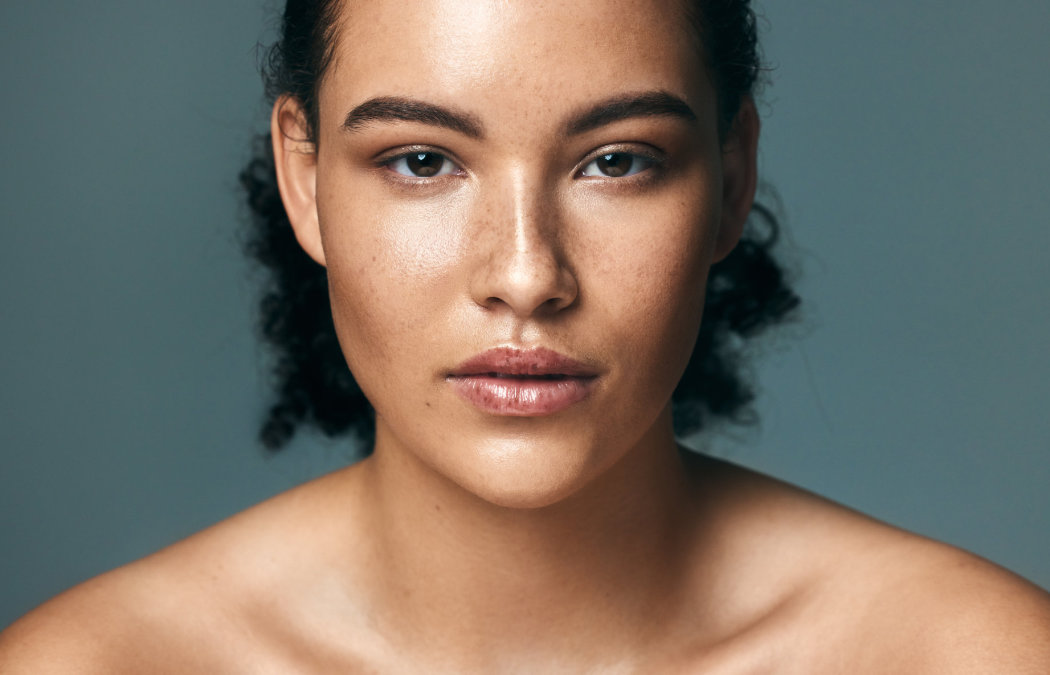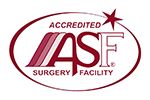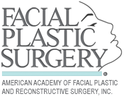Celebrating Diversity: The Art of Culturally-Sensitive Facial Enhancement in Beverly Hills

Beverly Hills represents one of the world’s most culturally diverse communities, where individuals from every continent call this prestigious area home. At Beverly Hills Center for Plastic & Laser Surgery, Dr. Ben Talei understands that facial beauty transcends any single standard and that exceptional plastic surgery outcomes require deep appreciation for the unique anatomical characteristics that define different ethnic backgrounds. The art of culturally-sensitive facial enhancement involves preserving and celebrating natural heritage while addressing individual aesthetic goals.
Understanding Ethnic Facial Anatomy
Each ethnic background brings distinct facial characteristics that contribute to natural beauty and cultural identity. These differences extend far beyond surface appearance, involving underlying bone structure, soft tissue distribution, skin thickness, and healing patterns that directly impact surgical planning and outcomes.
Asian facial anatomy often features more delicate bone structure, different eyelid architecture, and varying nasal bridge heights. African and African-American features may include fuller lips, different nasal shapes, and skin that tends to be thicker with unique healing characteristics. Middle Eastern and Mediterranean faces frequently showcase prominent noses that serve as defining family traits, while Latin American features often blend characteristics from multiple ethnic backgrounds.
Understanding these anatomical variations isn’t about categorizing or limiting options, but rather about respecting the natural foundation that makes each face unique. Successful ethnic facial enhancement works with these inherent characteristics rather than against them, creating results that look natural and maintain cultural authenticity.
Key Anatomical Considerations Include:
- Bone Structure Variations: Differences in cheekbone prominence, jaw width, and orbital anatomy
- Soft Tissue Distribution: Varying fat pad locations and muscle attachments across ethnic groups
- Skin Characteristics: Thickness, elasticity, and healing patterns specific to different backgrounds
- Aging Patterns: How different ethnic groups experience facial aging over time
Common Misconceptions About Ethnic Plastic Surgery
Many patients arrive at consultations with misconceptions about what ethnic facial enhancement should achieve. Some believe that successful surgery means conforming to Western beauty standards, while others worry that any enhancement will compromise their cultural identity. Both perspectives miss the true goal of personalized facial enhancement.
The objective of culturally-sensitive plastic surgery involves enhancing individual features while maintaining ethnic characteristics that contribute to personal identity. This might mean refining a nasal bump while preserving the strong profile that runs in a family, or addressing aging around the eyes while maintaining the natural eye shape that reflects cultural heritage.
Dr. Talei frequently works with patients to distinguish between features they genuinely wish to change and characteristics they’ve been conditioned to view as flaws by outside influences. This process requires honest communication about motivations, cultural pressures, and personal aesthetic goals.
The Asian Facial Enhancement Experience
Asian patients often seek facial enhancement to address specific concerns while maintaining their cultural identity. Common requests include double eyelid surgery that creates a natural crease without westernizing the eye shape, rhinoplasty that refines the nose while preserving ethnic characteristics, and facial contouring that enhances natural bone structure.
The key to successful Asian facial enhancement lies in understanding the wide diversity within Asian ethnicities. Korean, Japanese, Chinese, Filipino, Thai, and other Asian backgrounds each present unique facial characteristics that require individualized surgical approaches. What works beautifully for one Asian patient may not be appropriate for another.
Asian skin tends to be thicker with different healing patterns than Caucasian skin, which affects surgical technique and recovery expectations. Additionally, Asian facial aging often follows different patterns, with volume loss occurring in different areas and at different rates than in other ethnic groups.
Considerations for Asian Facial Enhancement:
- Eyelid Surgery: Creating natural-looking creases that complement eye shape
- Rhinoplasty: Building nasal bridges while maintaining ethnic nose characteristics
- Facial Contouring: Enhancing cheekbones without creating unnatural angularity
- Skin Treatments: Addressing pigmentation concerns common in Asian skin types
African and African-American Facial Considerations
African and African-American patients bring unique anatomical characteristics that require specialized surgical approaches. The skin tends to be thicker with more active oil glands, different collagen structures, and healing patterns that can include keloid formation in some individuals.
Facial features often include fuller lips, different nasal shapes, and distinctive cheekbone structures that contribute to natural beauty. Successful enhancement works to refine these features while maintaining their essential character. This might involve subtle lip reduction that maintains fullness, rhinoplasty that addresses function while preserving ethnic nose shape, or facial rejuvenation techniques adapted for darker skin tones.
The African diaspora encompasses tremendous diversity, from West African features to Caribbean influences to mixed heritage backgrounds. Each requires individualized assessment and treatment planning that respects specific anatomical characteristics and aesthetic goals.
Middle Eastern and Mediterranean Facial Heritage
Middle Eastern and Mediterranean patients often feature prominent nasal profiles, distinctive eye shapes, and strong facial bone structure that reflects their cultural heritage. These characteristics frequently represent family traits passed down through generations, creating emotional connections to cultural identity.
Facial enhancement for Middle Eastern and Mediterranean patients often focuses on refining prominent features while maintaining their essential character. This might involve smoothing a nasal hump while preserving the strong profile that defines family resemblance, or addressing aging around expressive eyes while maintaining their natural shape and intensity.
Skin characteristics in Middle Eastern and Mediterranean patients often include increased tendency toward pigmentation changes and different healing patterns that must be considered in treatment planning. Additionally, cultural attitudes toward facial enhancement vary significantly within these communities, requiring sensitive communication about goals and expectations.
Latin American Facial Diversity
Latin American patients represent tremendous ethnic diversity, often combining European, indigenous, and African heritage in unique facial characteristics. This diversity means that no single approach works for all Latin American patients, requiring individualized assessment of specific anatomical features and aesthetic goals.
Common requests include rhinoplasty to refine nasal shape while maintaining ethnic characteristics, facial contouring to enhance natural bone structure, and anti-aging treatments adapted for Latin American skin types. The key involves understanding the specific ethnic combination that creates each patient’s unique facial characteristics.
Latin American culture often celebrates fuller facial features, including lips and curves, which should be preserved and enhanced rather than diminished. Successful enhancement works to refine these features while maintaining the warmth and expressiveness that characterizes many Latin American faces.
The Science of Ethnic Aging Patterns
Different ethnic groups experience facial aging in distinct patterns that affect surgical planning and treatment recommendations. Understanding these variations helps predict how facial enhancement will age over time and ensures that surgical choices support long-term satisfaction.
Asian faces often maintain volume longer but may develop different wrinkle patterns, particularly around the eyes. African and African-American faces frequently age with less wrinkling but may experience different types of volume changes. Middle Eastern faces may show aging primarily in expression areas, while maintaining strong bone structure throughout life.
These aging patterns influence everything from facelift techniques to non-surgical treatment recommendations. What works beautifully for anti-aging in one ethnic group may be less effective or inappropriate for another, requiring customized treatment approaches.
Ethnic Aging Considerations:
- Volume Loss Patterns: Different areas of the face lose volume at different rates across ethnic groups
- Wrinkle Formation: Varying patterns of wrinkle development based on facial structure and skin characteristics
- Skin Changes: Different rates of elasticity loss and pigmentation changes
- Bone Remodeling: How underlying facial bone structure changes with age across different backgrounds
Culturally-Sensitive Consultation Approaches
Successful ethnic facial enhancement begins with culturally-sensitive consultations that explore not just aesthetic goals, but cultural background, family influences, and personal identity considerations. Dr. Talei understands that facial enhancement decisions often involve complex family dynamics and cultural expectations that require careful navigation.
The consultation process involves understanding what aspects of ethnic heritage patients wish to preserve, what changes they genuinely desire for themselves, and how to achieve enhancement that supports rather than compromises cultural identity. This requires honest communication about motivations, realistic discussions about achievable outcomes, and sometimes education about what constitutes natural-looking results for specific ethnic backgrounds.
Advanced Techniques for Ethnic Enhancement
Modern facial plastic surgery offers increasingly sophisticated techniques specifically adapted for different ethnic anatomies. These advances allow surgeons to achieve more natural results while respecting ethnic characteristics and minimizing recovery complications.
Ethnic rhinoplasty techniques now include methods for building nasal bridges in Asian patients, refining African nasal features while maintaining ethnic character, and addressing Middle Eastern nasal profiles while preserving family resemblance. Similarly, eyelid surgery techniques have evolved to create natural-looking results for Asian eye shapes without westernizing appearance.
These technical advances require specialized training and extensive experience with diverse patient populations. The learning curve for ethnic facial enhancement extends well beyond basic surgical technique, encompassing cultural sensitivity, anatomical variations, and healing pattern differences across ethnic groups.
Avoiding Cultural Appropriation in Enhancement
An important consideration in ethnic facial enhancement involves avoiding changes that could be perceived as cultural appropriation or attempts to appear as a different ethnicity. The goal should always be enhancing natural features rather than adopting characteristics from other ethnic backgrounds.
This distinction requires careful evaluation of patient motivations and honest discussions about appropriate aesthetic goals. While patients have the right to pursue enhancement that makes them feel confident, responsible surgeons help ensure that surgical choices support rather than compromise personal identity and cultural authenticity.
Long-Term Outcomes and Maintenance
Ethnic facial enhancement requires long-term thinking about how surgical choices will age and what maintenance will be needed over time. Different ethnic backgrounds may require different approaches to skin care, sun protection, and follow-up treatments to maintain optimal results.
Understanding these long-term considerations helps patients make informed decisions about initial surgical choices and plan for future maintenance needs. This might include specific skin care regimens for different ethnic skin types, modified sun protection recommendations, or adjusted timelines for revision procedures.
Your Heritage, Enhanced with Plastic Surgery
The art of ethnic facial enhancement lies in celebrating natural heritage while addressing individual aesthetic concerns. When performed with cultural sensitivity and technical expertise, facial enhancement can provide confidence and satisfaction while maintaining the characteristics that reflect personal and cultural identity.
At Beverly Hills Center for Plastic & Laser Surgery, Dr. Talei’s approach to ethnic facial enhancement combines advanced surgical techniques with deep respect for cultural diversity and individual identity. The goal is never to change who you are, but rather to help you look and feel like the best version of yourself while honoring the heritage that makes you unique.
If you’re considering facial enhancement and want to explore options that respect your ethnic background while achieving your aesthetic goals, schedule a consultation with Dr. Talei to discuss how culturally-sensitive facial enhancement can enhance your natural beauty while celebrating your unique heritage.
















